- May 10, 2022
How to Choose the Right Jighead for Crappie Fishing
Different crappie fishing jigheads vary in many ways. We’ll examine important variables and tell how to choose the best jighead for every situation.
Glitzy soft-plastic crappie lures, with their fish-catching designs and colorful identities, get the glory in crappie fishing while the journeyman jighead silently tags along but does the heavy lifting – literally.
Success draws attention, and that is certainly the case when a splashing livewell or basket full of slabs echoes loudly and proudly across the boat ramp or dock at the end of an outing. All ears within hearing distance strain to hear the answer when someone dares ask, “Whatcha catch ‘em on?”
No doubt it’s more fun to hear a response with bait names like Slab Hunt’Rs and Slab Slay’Rs, and colors called Purple Monkey and Electric Chicken, than, “a 1/8-ounce white jighead with a size 1 hook.” Yet, jigheads need love too, for without them most crappie baits are little more than tacklebox candy.
Jighead Basics
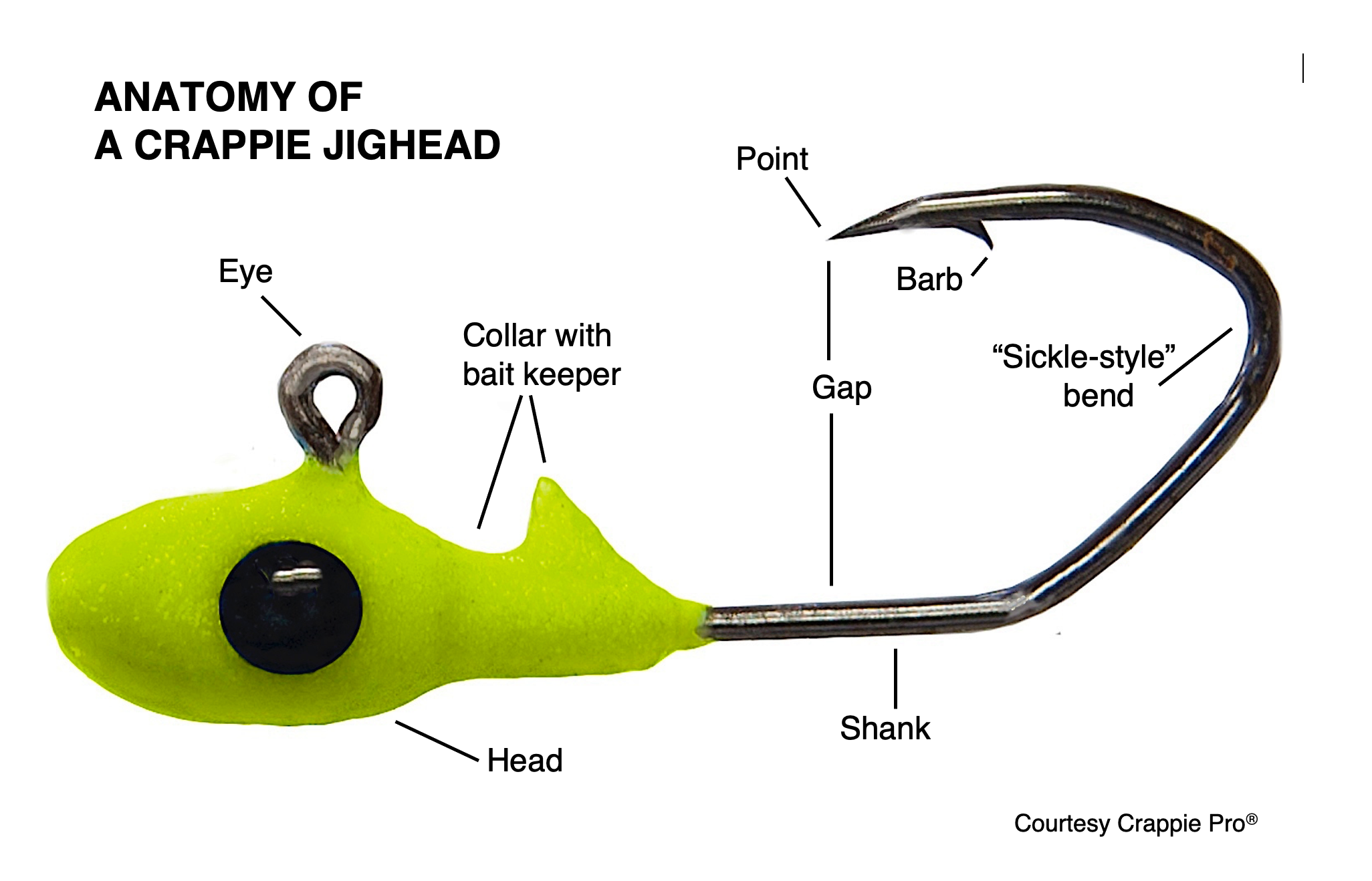

A jighead is simply a fish hook to which a weighted material (most commonly lead) has been molded at or near the eye end of the hook. Its purpose is to hold a bait in a manner that allows a natural-looking presentation in getting the lure to the fish species of choice, which for us means crappie.
Jigheads come in many shapes, sizes and colors. For crappie fishing, the most common style is the ball head. As its name implies, the head is round. The shape’s popularity is more likely due to mold-making convenience rather than function.
The most popular crappie jighead size is the 1/16 ounce. From it, the next is either going up to a 1/8 ounce, or down to a 1/24. Most crappie anglers use jigheads somewhere in the range of 1/32- to 3/16-ounce.
Although jigheads are similar in form and function, all are not made equal. Important differences come from the production, with diversity stemming from kinds of molds used (silicone, resin, aluminum, etc.), variations in the composition of the lead source, or the manufacturing process itself.
As a result, actual “weights” of jigheads can vary greatly from one to the next, and even more so, when comparing like-sized heads from different manufacturers. That’s why it is prudent to stick with a particular make or brand of jigheads once you find one that serves you well.
Jighead Hooks
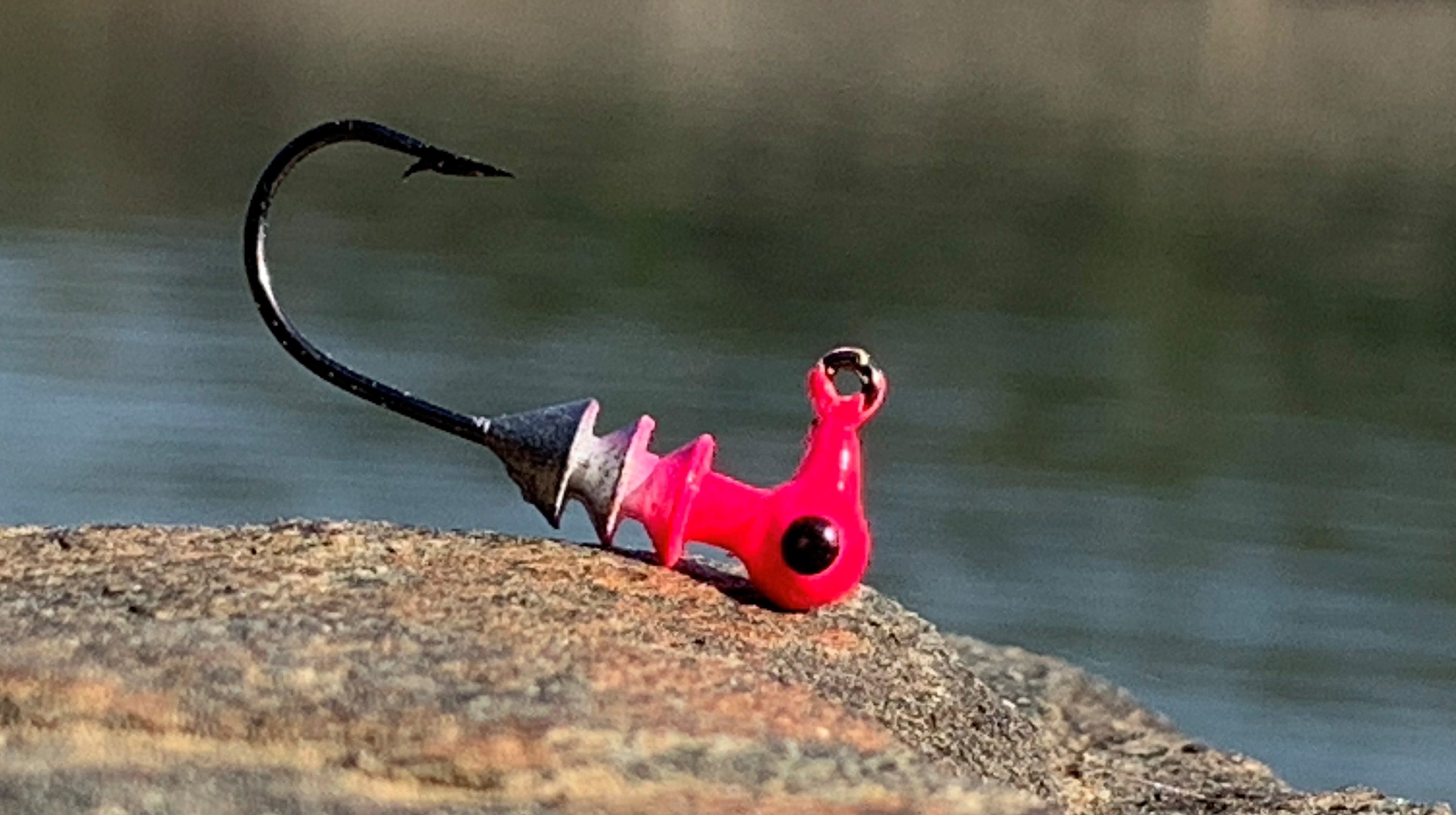

Jighead hooks have great differences. Most come from the same handful of hook manufacturers, but there are many hook options among them. Bottom line is, most jighead manufacturers depend on others for the hooks they use.
Hook considerations for crappie fishing don’t approach the magnitude of the extremes found in bass fishing, but paying attention to basic hook designs and advantages will help make you a better crappie fisherman.
While some anglers prefer jigheads with light-wired hooks because their bending properties allow for greater recovery when snagged, others opt for stronger ones because of better penetration in hooksets and for more pulling power to get fish quickly from cover.
Preferences in hook sizes for our sport vary, too, and I encourage you to pay attention to such. For hooks in crappie fishing, the bigger the hook’s number is, the smaller the hook will be. For example, a size 8 hook is considerably smaller than a size 1.
Hook size, style, material, sharpening and manufacturer (brand) can all have an influence on a jighead’s cost. With that noted, in the case of jigheads, you do get what you pay for.
That means comparing prices of similar jighead styles, as long as it’s “apples to apples,” can be a good starting point as to the overall quality of each, from manufacturing to componentry.
Crappie Pro Jigheads
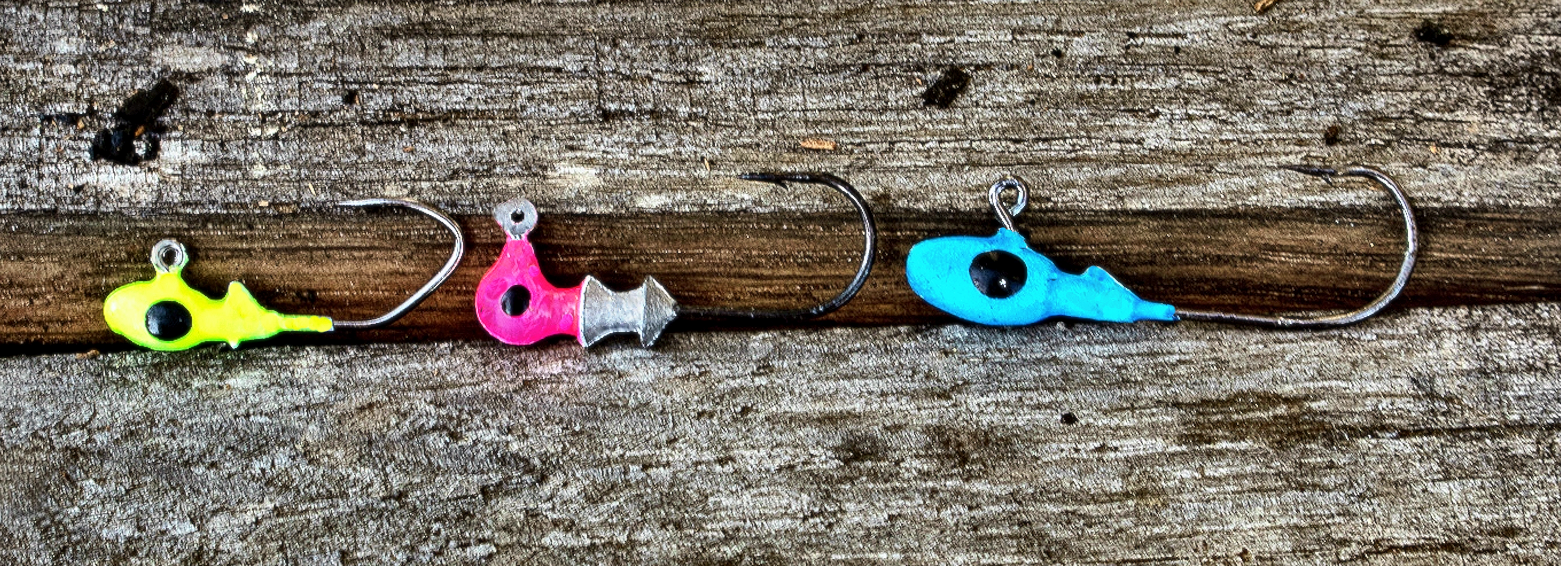

Bobby Garland affiliated itself with the Crappie Pro brand of premium jigheads nearly 15 years ago. That choice was based entirely on the quality that then-owners Larry and Janice Russell were producing from their Lake Eufaula, Okla., headquarters. Crappie Pro and Bobby Garland are both now part of the PRADCO Fishing family of brands.
The Russells’ computer-balanced jigheads were designed to hang perfectly on a loop knot in the desired natural, horizontal orientation. I give this couple full credit for being the pioneers of the exceptional jigheads that today’s crappie anglers demand.
Crappie Pro Mo’ Glo Jigheads feature souped-up levels of glow-in-the-dark phosphorous powders in five high-gloss colors: Pink Glo, Blue Glo, Ghost Glo, Orange Glo and Chartreuse Glo. The heads glowed brighter and longer than traditional glow finishes, thus the Mo’ Glo name. Mo’ Glo heads presented anglers the best of both worlds – daytime and nighttime crappie fishing – in a single design.
Mo’ Glo Jigheads are known for their glow colors and sharp, black chrome hooks tempered to perfection. The four available sizes in the series – 1/24, 1/16, 1/8 and 3/16 ounce – match well to Bobby Garland body styles and most soft-plastic crappie baits.
Which Jighead?


As a starting point, use with a jighead style, weight and hook size that visually fits the bait. For example, don’t rig a tiny bait on an oversized jighead. If it doesn’t look right to you, it probably won’t fool a fish either (and won’t perform properly).
A jighead’s hook should have most of its shank contained inside the lure’s body, yet enough of the point and gap protruding above to easily hook a fish. For user convenience, Bobby Garland recommends jighead sizes on the packaging of all soft plastics.
How Heavy?
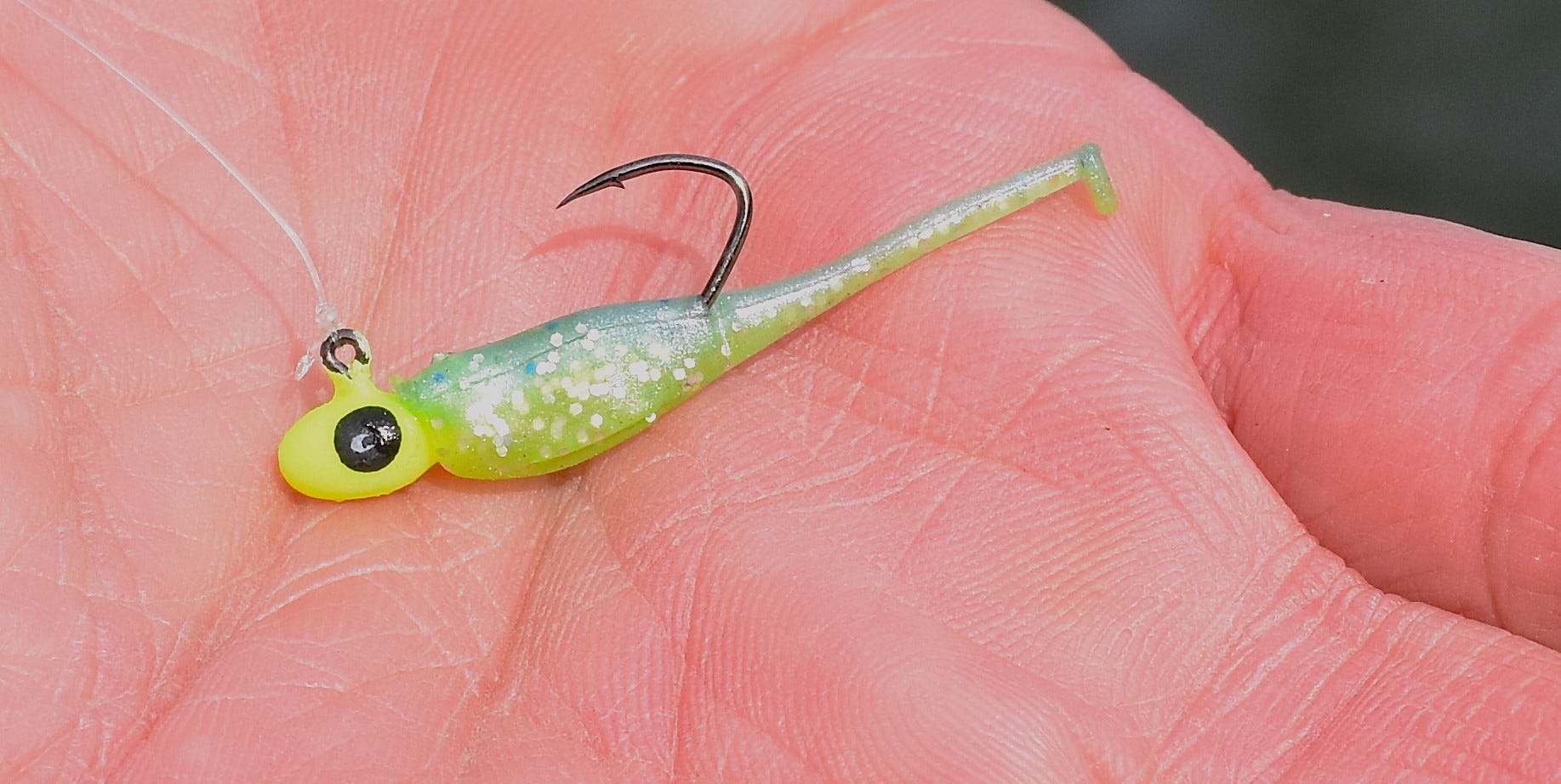

As a rule, go with the lightest jighead needed to control and “feel” the bait for the conditions you’re fishing, including depth, wind, current, line weight, line type, etc. This doesn’t apply to trolling, which has its own set of guidelines and is a topic deserving of a separate story at another time.
I do have my personal preferences when jigging, though, and perhaps you’ll find these overlapping ranges helpful for your fishing:
JIGHEAD SIZE FISHING DEPTH
1/16 ounce and lighter 14 feet and less
1/8 ounce and heavier 8 to 20 feet
3/16 ounce More than 15 feet
While a jighead’s weight is helpful information, don’t solely base your decisions on such. Manufacturers often pair their hook sizes for jigheads according to head weight, which means smaller heads get proportionately smaller hooks. That’s not an ideal formula in the case of crappie fishing. Here’s an example why.
For the technique called dock shooting, the preferred jighead is a 1/32 or 1/24 size. However, the best skipping baits are the larger ones, such as the 2.25-inch Minnow Mind’R or 3-inch Slab Slay’R. Standard panfish jigheads in these two lighter sizes are going to have hooks too small for this application.
Crappie Pro heads are designed for crappie fishing. Therefore, hooks used are matched according to intended purposes. That’s why the Head Dockt’R jighead, designed specifically for dock shooting, comes in 1/24- and 1/32-ounce sizes, but both are fitted with the same larger-than-normal #4 hooks to accommodate the technique and its use of bigger baits.
Crappie Pro’s Overbite Sickle jigheads offer another great example. Two of the series’ sizes, the 1/32 and 1/48, are fitted with a #6 “sickle” hook, providing the lighter heads with a bigger hook that still fits tiny baits, such as Bobby Garland’s Itty Bit Series.
And, remember the popular one-size-fits-most conditions jighead, the 1/16 ounce? There is a 1/16 Overbite jighead with a #2 sickle-style hook that is ideal for compact soft-plastics like the Hyper Grub, Swimming Minnow and Crappie Shooter.
What Color?
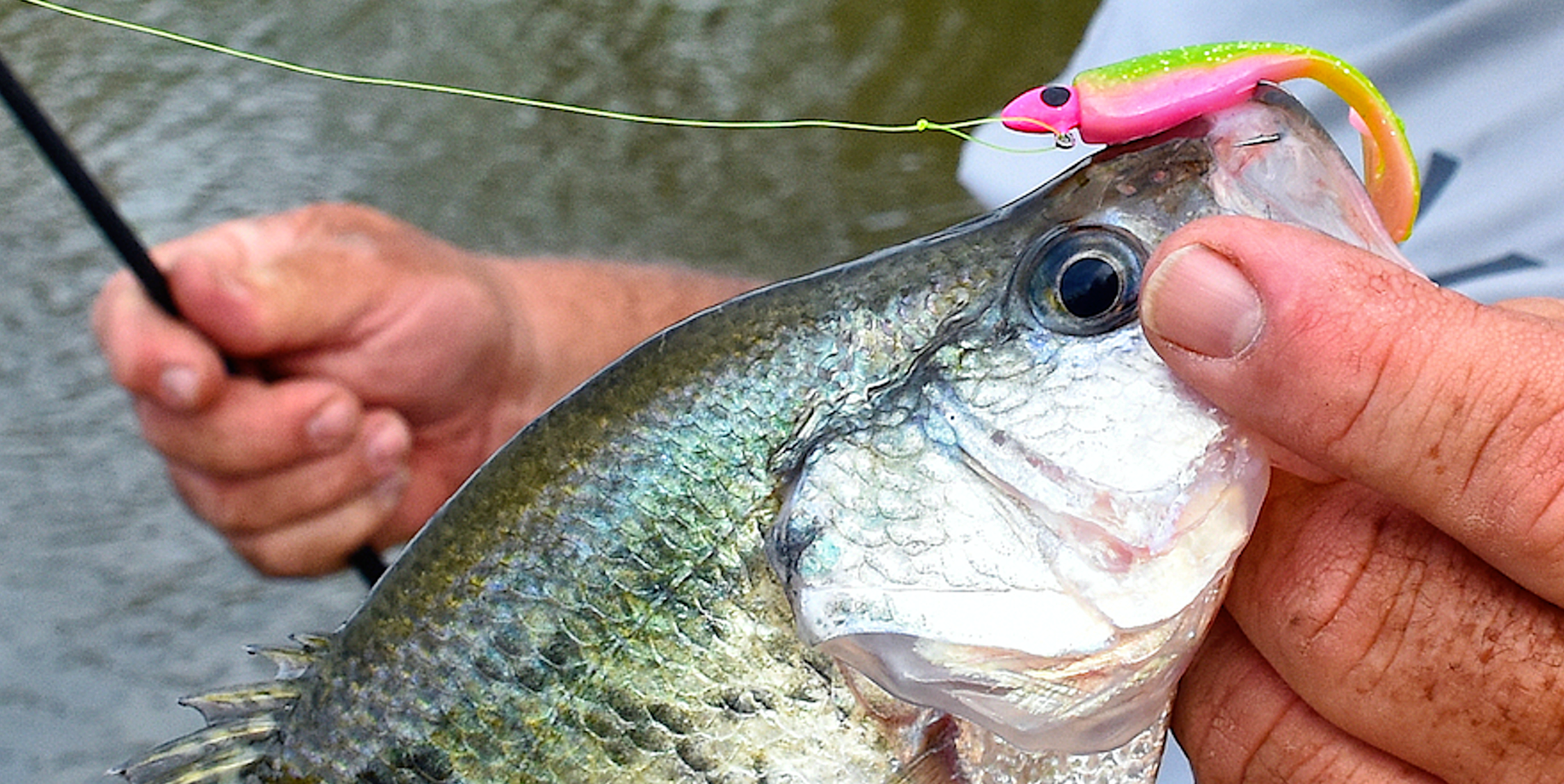

My experience is that all anglers have opinions on how to properly pick jighead colors for crappie, and none are wrong or they wouldn’t have the success stories they do.
Some say they pick colors according to what complements a color in their bait. For example, they choose a pink head to match the bubblegum in Electric Chicken; or, go with a blue head to highlight the pearlescent blue sheen of Monkey Milk.
On the other hand, there is a group that takes the opposite path. For their selections, they talk about selecting a jighead color that drastically contrasts to those of the bait. A good example is putting a white jighead on a Black/Hot Pink bait; or, rigging a Blue Ice Baby Shad on an orange jighead.
Again, I have my preferences, and it’s a simple approach based on lure visibility in the water.
|
LURE VISIBILITY |
MO’ GLO JIGHEAD COLOR |
LURE BODY COLOR |
|
15 inches or more |
Blue or Pink. Pink gets top nod in super clear water |
Complementary natural minnow and shad colors |
|
15 inches or less |
Chartreuse or Orange |
Bright hues, dark colors, Mo’ Glo glow-in-the-dark colors |
|
Wild card (shad activity present) |
White |
Pearl White, Bone White/Chartreuse, Bone White/Pearl White |
Red and purple jigheads also get high marks from many anglers, but I’ll usually incorporate these hues into my body selections rather than expanding my jighead assortment.
And, unpainted jigheads, you ask? I won’t argue if you say they deserve a spot in your tackle box. I’ve caught my fair share of crappie on plain lead ones. Nevertheless, painted jigheads are always my first choice.



